![]()
Tue, March 15, 2011 | The Meir Amit Intelligence and Terrorism Information Center
Past Iranian Attempts of Weapons Smuggling
In recent months two more Iranian attempts to ship weapons were exposed. Their destinations were Hezbollah (August 2010) and Gambia, West Africa (July 2010). The shipments, camouflaged as “innocent” cargos, were sent by sea using civilian shipping companies, in gross violation of the international sanctions imposed on Iran. Shipping weapons to terrorist organizations, opposition groups and subversive elements, as well as to Syria, is an important factor in Iran’s strategy for achieving regional Islamic hegemony, dominance and influence around the globe. In our assessment, Iran and its allies in the extremist camp intend to continue the shipments by employing fraud and concealment.
Overview
In recent months Iran made two attempts to ship weapons by sea, one to a terrorist organization (Hezbollah in Lebanon in August 2010) and the other to a West African country (Gambia in July 2010).
Both attempts manifested Iran’s strategy of shipping weapons by sea, air and land routes to terrorist organizations, opposition groups and subversive elements, as well as to countries which fall under Iranian sphere of influence. The shipments were directed by the Iranian leadership, implemented by the covert mechanism of the Revolutionary Guards’ Quds Force. The Quds Force is used as its main apparatus for the practical export the Iranian revolution beyond the borders of Iran itself.
Shipping the weapons to terrorist organizations, opposition groups and subversive elements, as well as to foreign countries, is an important factor in Iranian strategy, which strives for regional hegemony, Islamic dominance in various focal points in the Middle East (Lebanon, the Gaza Strip, Iraq, the moderate Arab countries) and beyond (East and West Africa, Latin America, Central Asia, etc.). Its objectives are to strengthen the Islamic regime in Tehran, to ensure its existence and survival, to deter and challenge those Iran perceives as its enemies, especially the United States and Israel, and to change the global strategic balance.
Regionally, Iran provides massive quantities of weapons to Hezbollah in Lebanon (primarily through Syria), and Hamas and the Palestinian Islamic Jihad in the Gaza Strip (primarily through Sudan). That enables the terrorist organizations to bolster military capabilities which threaten the northern and southern population centers of the State of Israel, as well as the pro-Western forces in Lebanon. Most of the weapons go to Shi’ite forces, and some even to Sunnis, who provoke confrontations and undertake subversive activities in Lebanon, Iraq, Yemen, Bahrain and Afghanistan.
For Iran, the African continent is an important center of operations, where it combines subversion and diplomacy. Iran seeks to establish its power in countries like Sudan (regarded as a conduit for support for the terrorist organizations in the Gaza Strip) and Eritrea (which lies along the Red Sea), at the same time increasing its involvement in countries in both East and West Africa.
Acting in accordance with its African policy, Iran tries to exploit what it regards as the weakness of the local regimes and their readiness to receive aid.[1] Shipping weapons to various clients, such as terrorist organizations, subversive elements and various countries, is sometimes part of an extensive Iranian package deal which also includes money, training, logistic support and ideological direction. Politically, that policy is implemented within a framework of alliances and agreements for military cooperation, as well as in technological, agricultural, financial, economic and political areas.
By shipping weapons, Iran violates a series of UN Security Council resolutions, including Resolution 1747, which forbids Iran to export arms. Iran’s use of international shipping companies and European ports to export arms is a methodical and gross violation of international shipping laws and a genuine danger to both the ships themselves and the ports involved.
This study examines the methods used by Iran to ship arms and analyzes two specific examples of arms shipped by sea and intercepted during the second half of 2010, one to Hezbollah via Italy (in August) and the other to Gambia via Nigeria (in July). The Appendix provides examples from the past decade of Iran’s use of sea and air lanes and overland routes. In our assessment Iran and its allies in the extremist camp intend to continue their arms shipments.
Methods for Shipping Weapons
Shipping weapons to distant locations entails considerable logistic and political difficulties. To that end, over the years Iran has established a covert mechanism headed by the Revolutionary Guards’ Quds Force.[2] The Quds Force uses existing commercial transportation air, sea and land routes. Iran frequently uses sea routes to ship weapons. Recently, following sanctions imposed on the large Iranian shipping companies (HDS, IRISL), Iran also uses European and international shipping companies for their arms shipments. They do that without informing them of the nature of the cargos. To that end Iran extensively uses shell corporations and false documentation, claiming cargos contain innocent materials (such as milk powder and polyethylene pellets).
The weapons are generally stowed behind the innocent cargos, although an X-ray can sometimes reveal their true nature. The shipments are also provided with bills of lading which indicate innocent contents. For example, the bill of lading of the Francop, which carried a large shipment of arms from Iran to Hezbollah in November 2009, stated that the cargo consisted of polyethylene pellets. The weapons were stowed behind the sacks of polyethylene.
Iran uses various methods to make the arms shipments look innocent, using different types of transportation via commercial sea, air and land routes to many destinations in the Middle East and around the globe. That is done using the merchant fleet, cargo planes, trains and trucks.
Hiding Weapons Aboard the Francop
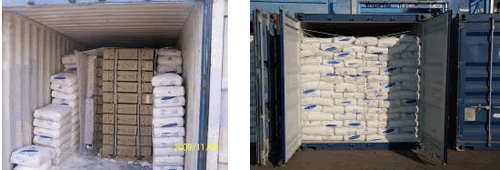
Left: Sacks of "innocent" polyethylene pellets aboard the Francop. Right: Crates of weapons for Hezbollah stowed behind the polyethylene.
Shipping Weapons from Iran to Hezbollah by Sea through Italy
In August 2010 a shipment of arms from Iran was sent by sea to Syria, apparently meant for Hezbollah in Lebanon. It departed from the Iranian port of Bandar Abbas on August 6, apparently with the involvement of the Revolutionary Guards’ Quds Force. According to its documentation, the shipment consisted of milk powder, packed into a container and loaded aboard a ship belonging to the Italian company MSC, which docked in the port of Gioia Tauro, Italy, on August 27. The container was to be transferred to a different ship and sent to the Syrian port of Latakia.[3]
The ship used for transporting the weapons was the M/V MSC Finland, owned by a Greek company called Hinter Marin SA. It was operated by the Swiss-Italian MCS and flew the Liberian flag.
The container aroused suspicion in the Italian port. It was examined by the Italian police, who discovered that it held seven tons of an explosive called RDX, packed in sacks labeled “milk powder,” which is similar in appearance to RDX (marketed as a white powder). This type of explosive is used in the warheads of Hezbollah’s missiles and rockets.
That was the first time a cargo of weapons was discovered in an Italian port, and it is not known whether it or other European ports have been used for the same purpose. The discovery of the weapons exposed one of the naval smuggling methods Iran uses by camouflaging its arms shipments, and exploiting European ports and shipping companies.
Exposing the Arms Shipment in Nigeria on Its Way to Gambia
On October 26, 2010, the Nigerian security forces announced that an examination of the M/V Everest, which had arrived from Iran and docked in the Nigerian port of Apapa in July, had revealed 13 containers which held tons of weapons. The shipment was listed as containing building materials (stones and asbestos, behind which the weapons were hidden). Its port of destination was Banjul in Gambia, and it was addressed to a company with ties to the Gambian president. The media reported that Nigerian intelligence deployed to intercept the shipment after receiving advance notice (Israel Channel 2 TV, November 12, 2010).
Among the weapons were 107mm rockets, 120mm mortar shells and light arms. While the Iranians attempted to represent the shipment as a private business deal,[4] shipments of arms to Gambia is apparently part of a joint Iranian-Gambian cooperative security agreement. It is also possible that the arms were meant for subversive elements whose identity is unknown.
The containers were found aboard the M/V Everest. It belongs to an Iranian company called Behineh Trading, apparently connected to a Quds Force operative (who was later detained). It is operated by a French company called CMA-CGM, and flies the flag of the Marshall Islands.
CMA-CGM is a private company owned by Jacques Saadé, a French businessman of Syrian-Lebanese extraction. It is the third largest shipping company in the world, owns 300 ships and operates in 400 ports around the globe. At the beginning of 2010, apparently following Iran’s difficulties in using its own ships due to international sanctions, CMA-CGM announced its intention to increase significantly its activity in Iran.
CMA-CGM said it was not aware that the shipment included arms and that the bill of lading indicated building materials (Ynet, November 15, 2010).

M/V Everest bill of lading published in the Nigerian media. An examination of the bill revealed that the shipment, which left the port of Bandar Abbas, was dispatched by a Quds Force shell corporation and supposed to reach a Nigerian contact.
Aftermath of the Exposure of the Nigerian Arms Shipment
The exposure of the Iranian arms shipment led to a serious diplomatic crisis between Iran and a number of African countries. The Nigerians found the shipment particularly serious, both the public and the government, because they feared internal clashes related to national elections.
An investigation conducted by the Nigerian security services revealed two Iranian “businessmen” who sought refuge in the Iranian embassy in the Abuja, the capital of Nigeria, when the affair was exposed. The Gambian media later reported that the two, Tamsabahi[5] and Azim Aghajani, were senior Quds Force operatives. They also reported that Tamsabahi was the senior operative responsible for the Quds Force in Africa.
Following the discovery of the arms shipment, the Iranian foreign minister, Manuchehr Mottaki (since replaced) arrived in Nigeria for a meeting with his Nigerian counterpart. They agreed that the Iranians would cooperate with the interrogation and the affair would end relatively quietly. They also agreed that Tamsabahi would be released to Iran, while Azim Aghajani would remain in detention and be interrogated by the Nigerian security forces. He was indicted for his involvement in the affair. As a result, a local Quds Force network of contacts was also exposed.

Two left pictures: "Iranian agents" in Gambia. Right: Azim Aghajani on his way to court in Nigeria (Photos from the Gambian Echo).
Despite the arrangement reached with Iran, Nigeria reported the arms shipment to the UN sanctions committee and a panel of UN experts began investigating the affair (Haaretz, November 24, 2010). The exposure of the shipment and of Iran’s activity, which was considered subversive in West Africa, led to tension between Iran and other African countries.
Gambia, the country of the shipment’s final destination, announced it was severing diplomatic relations with Iran and informed the employees of the Iranian embassy that they had 24 hours to leave the country (NRG, November 23, 2010). It was apparently Gambia’s wish not to be regarded as involved in illegal arms shipments.
After the affair in Nigeria, Senegal also accused Iran of subversion and returned the Iranian ambassador (December 2010). On February 23, 2011, the Senegalese foreign ministry announced that Senegal was severing diplomatic relations with Iran. A report issued by the Senegalese chief of staff indicated that the MFCD,[6] the separatist rebels in the south of the country, were using weapons from Iran which had caused the deaths of Senegalese soldiers (aljazeera.net website). In response the Iranian foreign minister claimed that the Senegalese decision could not be justified (IRNA News Agency, February 24, 2011).
Appendix
Iranian Arms Shipments Seized in Recent Years
The two shipments exposed last year are part of a long series of arms shipments originating in Iran destined for various countries and sent by sea, air and over land. There were many such shipments which reached the terrorist organizations and various subversive groups without being discovered. In every instance Iran denied its involvement in the arms shipments. The recent shipments, in fact, were not the only ones intercepted on their way from Iran to various organizations.
Some examples are:
1) December 2001: The Karin A was purchased by the Palestinian Authority, loaded with an enormous quantity of arms for the Gaza Strip in the Iranian port of Kish. It sailed via the port of Hodeidah in Yemen, and from there it was bound for Egypt, where it planned to unload its cargo. The weapons were supposed to be collected by fishing boats which would turn them over to the terrorist organizations in the Gaza Strip. The ship was intercepted on January 3, 2002 by the Israeli navy. It was found to be carrying 50 tons of weapons, among them rockets, mortars, anti-tank missiles, RPGs and light arms. Some of them were meant to upgrade the terrorist organizations’ operational-terrorist capabilities during the first year of the Palestinian terrorist campaign (the second intifada).
2) Between December 2003 and January 2004 the Iranian Revolutionary Guards conducted an air lift of weapons and equipment to Syria for Hezbollah. The flights were disguised as bringing humanitarian assistance to victims of the earthquake in the southeastern Iranian city of Bam. It was a clear exploitation of the open skies policy of the time, during which planes from all over the globe brought humanitarian assistance to Iran.
3) May 2007 – A shipment of weapons was sent by train from Iran to Syria through Turkey, apparently destined for Hezbollah. According to reports from the media, an explosion caused by the Turkish PKK revealed that one of the containers held weapons (81mm mortar shells, 122mm [rockets], ammunition, explosives and RPGs). Iran denied it was behind the shipment. According to a Wikileaks document, trains from Iran are examined inside Turkish territory approximately one and a half kilometers from the border. The Wikileaks documents describe the great ease with which the Turkish-Iranian border can be crossed, where the means for examination are extremely flimsy (date of relevant documentation, July 28, 2009).
4) March 2008 – An Iranian commercial ship, the Iran Bagheri, owned by the Iranian shipping company IRISL, departed from Iran for the Syrian port of Latakia with hundreds of tons of arms for Syria. A NATO force which was in the region interrogated the ship’s captain as the ship left the Suez Canal and requested permission to examine the ship itself. After employing evasion, fraud and concealment, the ship reached its destination in Syria without examination.
5) End of 2008 – The Egyptian security forces exposed a Hezbollah network which dealt with smuggling weapons and infiltrating terrorist operatives into the Gaza Strip. The Egyptians claimed that the network was directed by Iran, and they considered its exposure as serious Iranian involvement in their internal and national security affairs. Hezbollah leader Hassan Nasrallah admitted the involvement of his organization in smuggling weapons and infiltrating operatives in to the Gaza Strip from Egypt, but denied the Egyptian accusations of the network’s involvement in subversion and terrorist attacks. The leader of the network, a Hezbollah operative nicknamed Sami Shihab, escaped from prison in Egypt during the events which led to the ousting of Egyptian President Hosni Mubarak, and on February 16, 2011, participated in a Hezbollah rally in Beirut.[7]
6) January 2009 – The Cypriot merchant vessel Monchegorsk, which was leased by the Iranian shipping company IRISL, was seized carrying more 1,300 tons of military equipment sent from Iran to Syria. On January 19 it was delayed in the Red Sea by American forces and examined on January 19 and 20. It was found to be carrying a variety of raw materials and components for the manufacture and assembly of weapons. Sailing through the Mediterranean Sea on its way to Latakia, it was recalled to Cyprus by the authorities and examined at the port of Limassol on January 27. Its cargo was found to contain large quantities of explosives used in mortar shells and raw materials for manufacturing artillery barrels.
7) October 2009 – A shipment sent by sea containing weapons and industrial military equipment for the manufacture of weapons, apparently for Syria (and possibly Hezbollah) was sent from Iran to the port of Latakia. The ship, which flew the German flag, was reloaded in Egypt and again in Malta, where an examination revealed the weapons.
8) November 2009 – Thirty-six containers of arms were sent from Iran to Hezbollah, disguised as polyethylene pellets. They were confiscated aboard the Cypriot ship Francop, and were found to contain more than 500 tons of arms. They included thousands of 107mm rockets, 122mm rockets, ammunition for 106mm recoilless cannons, hand grenades and light arms ammunition.[8] The crates were stamped “Ministry of Sepah,” i.e. ‘the Revolutionary Guards Ministry’. It was established 1980 and was responsible for the logistic aspects of the Revolutionary Guards’ activity. It was closed in 1989 following changes in the Iranian constitution.
The Francop and its cargo. Some of the containers bear the stamp of the Islamic Republic of Iran Shipping Lines (IRISL).
9) In 2009 Iran apparently used cargo flights of the Sudanese airline to ship arms to the Palestinian terrorist organizations in the Gaza Strip. The cargos were shipped from Iran to Sudan via Oman and Saudi Arabia, and from Sudan to Syria through Egypt and Jordan (relevant Wikileaks documentation, March 29, 2009). In our assessment the arms were smuggled from Sudan to the Gaza Strip by local smugglers via Egypt (the Sinai Peninsula). According to Wikileaks, the United States warned Sudan, Oman, Saudi Arabia and Yemen that transporting Iranian arms through Sudan for the Palestinian terrorist organizations was a serious breach of the UN resolution forbidding Iran to ship arms of any type.
10) In March 2009 the American and Arab media reported that Israel had attacked a convoy in Sudan. The convoy carried a shipment of arms and was on its way to the Gaza Strip:
a) On March 25 CBS reported that in January 2009 Israeli aircraft had attacked a convoy in Sudan. The convoy consisted of 20 trucks loaded with weapons which were on their way to the Gaza Strip. According to the report, the attack was carried out in a desert region south west of the Sudanese port city of Port Sudan, and 39 men were killed.
b) On March 29 Time Magazine reported that a shipment of weapons had been attacked. According to the magazine, the shipment, which left from Iran, contained long-range Fajr missiles, which if fired from the Gaza Strip could reach Tel Aviv.
c) On March 30 Time Magazine reported that dozens of fighter planes and unmanned aerial vehicles had attacked the 23-truck convoy. Pictures taken by the UAVs revealed that the convoy was partially hit and F-16s returned and struck them from the air again.
Photographs taken, according to Al-Jazeera TV, at the site of the attack in Sudan (Al-Jazeera TV, March 26, 2010).
11) In August 2010 a shipment of arms from Iran was discovered. Transported by sea, it was destined for Syria, its final recipient apparently Hezbollah in Lebanon. The ship departed from the Iranian port of Bandar Abbas on August 6, apparently with the involvement of the Quds Force. According to its bill of lading, the ship was carrying powdered milk, packed in a container on board a ship which sailed to the Italian port of Gioia Tauro on August 27. The container was supposed to have been shipped from there to the Syrian port of Latakia aboard a different ship.
12) On October 26, 2010, the Nigerian security forces announced that an examination of the M/V Everest, which had arrived from Iran in the Nigerian port of Apapa in July 2010, was found to be carrying 13 containers of tons of weapons disguised as building materials (stone and asbestos). Their final destination was the Gambian port of Binjul, and the shipment was addressed to a company with ties to the Gambian president. The media reported that Nigerian intelligence had received advance warning of the shipment’s arrival (Israel Channel 2 news, November 12, 2010).
Notes:
[1] For further information about Iran’s connections in Africa, see the July 29, 2009 ITIC bulletin, “Iran’s activity in East Africa, the gateway to the Middle East and the African continent”.
[2] For further information see the April 2, 2007 ITIC bulletin, “sing the Quds Force of the Revolutionary Guards as the main tool to export the revolution beyond the borders of Iran”.
[3] According to the bill of lading, the weapons aboard the Francop were also supposed to be shipped to the Syrian port of Latakia.
[4] Alaa al-Din Boroujerdi, head of the Iranian Majlis’ foreign affairs committee, said that the weapons were supposed to reach Gambia and were part of a legal business deal between a private Iranian company and the Gambian government (Haaretz, November 24, 2010).
[5] The reference may possibly be to Ali Akbar Tabatabaei, whose name was mentioned by the media in connection with the affair along with Azim Aghajani.
[6] The Movement of Democratic Forces in the Casamance.
[7] For further information see the April 28, 2009 ITIC bulletin, “Exposure of a Hezbollah network in Egypt: state of affairs, implications, and reactions in Egypt and in the Arab and Muslim world” and the April 13, 2009 ITIC bulletin, Egypt exposes a Hezbollah network on its soil claiming it not only smuggled weapons into the Gaza Strip and but also planned to carry out terrorist attacks and subversion activities. Hassan Nasrallah admitted a detained Hezbollah operative was involved in smuggling but denied other accusations”.
[8] For further information see the November 5, 2009 ITIC bulletin, “The Israeli Navy captures a ship carrying a large shipment of weapons (including rockets, mortar shells and anti-tank weapons) from Iran. The shipment was apparently on its way to Hezbollah in Lebanon” and Israel Navy Intercepted Iranian Weaponry.



 RSS
RSS



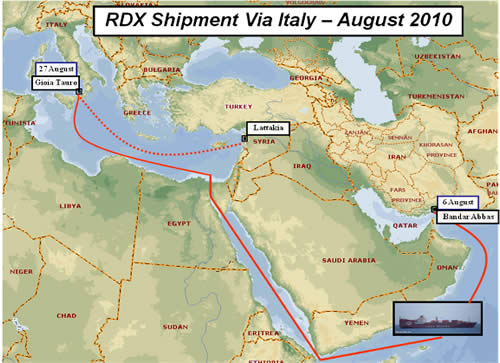



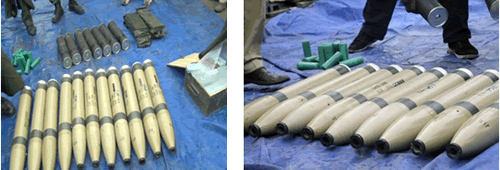
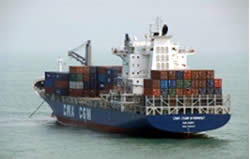

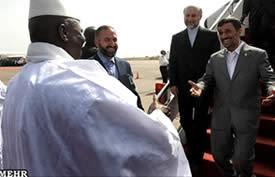


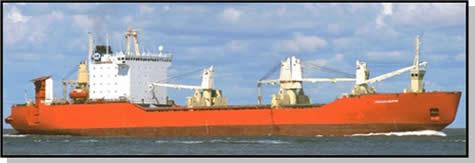
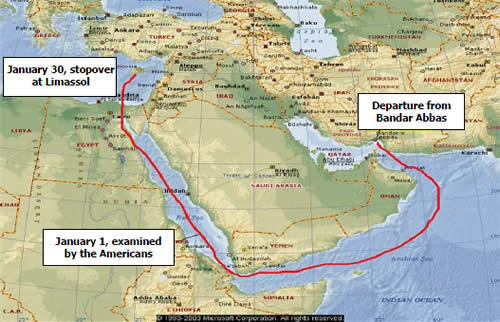




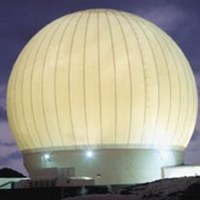







Past Iranian Attempts of Weapons Smuggling | #Iran #Israel http://j.mp/fMPryX
RT @CrethiPlethi: Past Iranian Attempts of Weapons Smuggling | #Iran #Israel http://j.mp/fMPryX